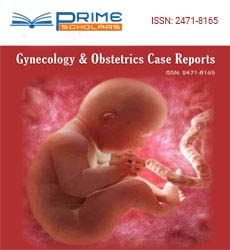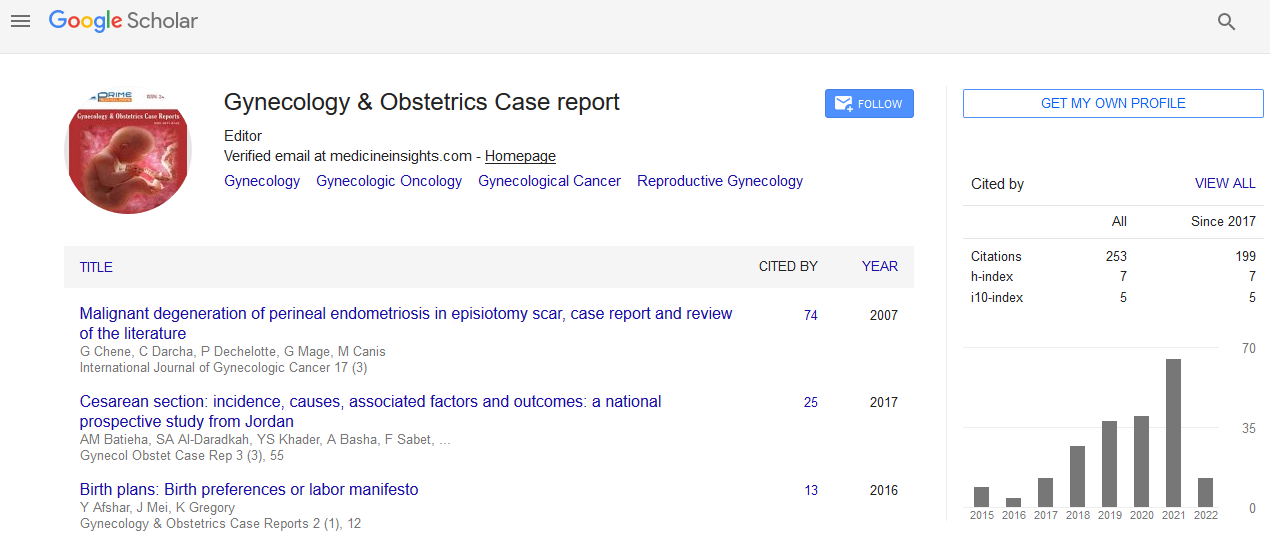Perspective - (2025) Volume 11, Issue 1
Global Trends in Ovarian Cancer Incidence and Mortality: A 20-Year Perspective
Leonardo Alice*
Department of Medical Oncology, Institute of Oncology, 022328 Bucharest, Romania
*Correspondence:
Leonardo Alice, Department of Medical Oncology, Institute of Oncology, 022328 Bucharest,
Romania,
Email:
Received: 27-Dec-2024, Manuscript No. ipgocr-25-22694;
Editor assigned: 30-Dec-2025, Pre QC No. ipgocr-25-22694(PQ);
Reviewed: 10-Jan-2025, QC No. ipgocr-25-22694(QC);
Revised: 17-Jan-2025, Manuscript No. ipgocr-25-22694(R);
Published:
27-Jan-2025
INTRODUCTION
Over the past two decades, ovarian cancer has continued to pose a significant threat to women's health worldwide. Despite being less common than other gynecological malignancies, ovarian cancer is the most lethal, primarily due to its late diagnosis and asymptomatic early stages. Global trends in the incidence and mortality of ovarian cancer have revealed notable regional and temporal variations, shaped by socioeconomic status, healthcare access, genetic predisposition, lifestyle factors and public health policies. This article explores these global patterns over the last 20 years, drawing attention to the successes, persistent challenges and future directions in combating this formidable disease [1].
The global incidence of ovarian cancer has seen modest fluctuations over the past two decades, with a general trend toward stabilization or slight decline in many high-income countries. This shift is largely attributed to the widespread use of oral contraceptives, which have been shown to reduce ovarian cancer risk significantly. Countries in North America, Western Europe and Oceania have benefited from early adoption of these preventive measures, as well as enhanced healthcare systems that support routine gynecological evaluations and increasing public awareness. Conversely, several Low- and Middle-Income Countries (LMICs), particularly in parts of Asia, Africa and Eastern Europe, have reported rising incidence rates. These increases are likely influenced by demographic transitions such as aging populations, changing reproductive patterns including delayed childbirth and fewer pregnancies and the adoption of Westernized lifestyles [2].
DESCRIPTION
Mortality trends, while showing some improvement, continue to highlight stark global disparities. High-income nations have experienced gradual declines in ovarian cancer mortality, driven by advancements in early detection technologies, surgical techniques and chemotherapeutic regimens, including the introduction of targeted therapies such as PARP inhibitors for patients with BRCA mutations. Additionally, centralization of care and multidisciplinary approaches in specialized cancer centers have contributed to improved survival outcomes. In contrast, LMICs often lack the infrastructure and resources necessary for timely diagnosis and effective treatment, resulting in persistently high mortality rates. Many patients in these regions are diagnosed at advanced stages when the prognosis is poor and treatment options are limited or unavailable [3].
A deeper look into age-standardized rates reveals that ovarian cancer predominantly affects women over the age of 50, although certain genetic syndromes such as BRCA1/2 mutations can predispose younger women to early-onset disease. The availability of genetic counselling and testing has grown in affluent countries, facilitating the identification of high-risk individuals who may benefit from prophylactic interventions, such as risk-reducing salpingo-oophorectomy. These preventive strategies have played a pivotal role in reducing both incidence and mortality in specific subpopulations [4]. In terms of histological subtypes, high-grade serous carcinoma remains the most common and aggressive form of ovarian cancer. While therapeutic advancements have improved progression-free survival for some patients, the five-year overall survival rate for advanced-stage disease remains below 50% globally.
Disparities in treatment access exacerbate this issue, underscoring the urgent need for equitable distribution of medical resources and implementation of standardized treatment protocols across different regions. Global efforts to combat ovarian cancer have gained momentum through awareness campaigns, research collaborations and policy initiatives. International bodies such as the World Health Organization (WHO) and the International Agency for Research on Cancer (IARC) have emphasized the importance of data collection, cancer registries and the development of national cancer control programs. Innovations in liquid biopsy, molecular profiling and artificial intelligence-driven diagnostic tools promise to transform the future landscape of ovarian cancer care, but their accessibility remains a concern in under-resourced settings. The COVID-19 pandemic introduced a new set of challenges, disrupting cancer care services and delaying diagnoses across the world. These interruptions are expected to have long-term consequences on ovarian cancer outcomes, particularly in already vulnerable populations. Recovery from these setbacks necessitates a reinvigorated commitment to strengthening health systems, ensuring continuity of care and addressing health inequities [5].
CONCLUSION
The global burden of ovarian cancer over the last 20 years reflects both progress and persistent disparities. While incidence and mortality have declined in many high-income settings, significant gaps remain in LMICs, where limited access to care continues to hinder effective prevention, diagnosis and treatment. Addressing these challenges requires a multifaceted approach encompassing policy reform, global health investments, public education and technological innovation. Only through sustained and inclusive efforts can the trajectory of ovarian cancer be altered to improve outcomes for women worldwide.
Acknowledgement
None.
Conflict of Interest
None.
REFERENCES
- Friedman AJ, Haas ST (1993) Should uterine size be an indication for surgical intervention in women with myomas? Am J Obstet Gynecol 168(3):751-755.
Google Scholar Cross Ref Indexed at
- Ellingson LA, Yarber WL. Breast self-examination, the health belief model and sexual orientation in women. J Sex Ed Ther 22(3):19-24.
Google Scholar Cross ref
- Bree AF, Shah MR, BCNS Colloquium Group (2011) Consensus statement from the first international colloquium on Basal Cell Nevus Syndrome (BCNS). Am J Med Genet A 155(9):2091-2097.
Google Scholar Cross Ref Indexed at
- Piszczek C, Ma J, Gould CH, Tseng P (2018) Cancer risk-reducing opportunities in gynecologic surgery. J Minim Invasive Gynecol 25(7):1179-1193.
Google Scholar Cross Ref Indexed at
- Daly MB, Dresher CW, Yates MS, Jeter JM, Karlan BY, et al. (2015) Salpingectomy as a means to reduce ovarian cancer risk. Cancer Prev Res 8(5):342-348.
Google Scholar Cross Ref Indexed at
Citation: Alice L. (2025) Global Trends in Ovarian Cancer Incidence and Mortality: A 20-Year Perspective. Gynecol Obstet Case
Rep. Vol.11 No.1:02.
Copyright: Alice L. This is an open-access article distributed under the terms of the Creative Commons Attribution License,
which permits unrestricted use, distribution and reproduction in any medium, provided the original author and source are
credited.

